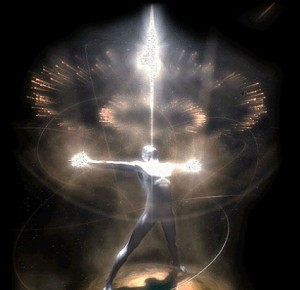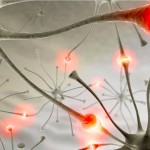What is the real secret? Cerebrology can enhance our intent; our intent is an automatic non-verbal part of us. You may think of intent as who we are or our soul. Other verbal or non-verbal enhancements we may do are only temporary because they are not stored in the permanent files our brain automatically uses and so they do not affect our intent.
When you read my blog called “What Controls our Brain“, I am sure you saw that the non-verbal part of our brain, where our intent is located, controlled how we automatically prepared, which in turn altered our perception, reactions, emotions and body. In this blog was also an experiment that showed that up to 7 seconds before we “think” we make a decision to use our left or right hand to touch something our non-verbal brain and its “intent” has already made the decision. This shows that our thoughts are a mere afterthought to our intent.
How we feel about ourselves, not think about ourselves, powerfully alters our relationships with animate and inanimate objects. Others are greatly influenced by how we feel and feel it as well. To many, because how we feel affects them directly, they feel their changes and are not able to distinguish their feelings from ours. The old expression “you made me feel” is really not so far off it appears. The important thing now is, we are all influenced by the feelings others have and many times it accentuates the negative reactions we may have ourselves sometimes.
The best way to stop the reaction we have as a result of feeling how others feel, is for us to “let go” of what we have that creates our own reactions. When we are free of our own negative reactions, we can clearly feel someone’s feelings as their own and they do not bother us.
In his article, “Heart Rate Differences between Targets and Nontargets in Intuitive Tasks” Tressoldi reports the results of two experiments, aimed at investigating pre-stimuli heart rate changes. In the experiment a statistical significance (error risk) of p=0,015 was obtained while in the second experiment p reached 0,001. These results support the hypothesis that the heart rate reacts before the stimulus takes place (Tressoldi and coll., 2005).
In 2003, Spottiswoode and May in Cognitive Science Laboratory replicated the Biermnan and Radin (1997) experiments that show an increase in skin conductance 2-3 seconds before emotional stimuli are presented. Spottiswoodie and May replicated these results with a statistical significance of p=0, 0005, and performed controls in order to exclude all possible artifacts and alternate explanations. These results support the hypothesis that the autonomic nervous system reacts in advance to stimuli (Spottiswoodie and May 2003).
In 1979 the PEAR (Princeton Engineering Anomalies Research) laboratory was established under the direction of Robert Jahn, Dean of the University’s School of Engineering and Applied Sciences. The purpose of this laboratory was to replicate and study the results obtained by a student, which showed anomalous mind/machine interactions when using REG systems (Random Event Generator). PEAR and a consortium of other universities have replicated these results. The anomalous mind/machine interaction which is observed is very simple: REG systems produce ultra-precise Gaussian distributions, but when a subject tries to distort these distributions only by the expression of his intentionality, statistically significant deviations are observed. Even more fascinating is the fact that those distributions which have been produced before the subjects expression of intentionality show an amplified effect. The statistical significance of these amplifications is p<0,00000001 (Jahn, 2005). These experiments show that living systems constantly seem to be engaged in anticipation and show that intent can influence matter.
How we experience our world does so much to change it. I hope you enjoy learning how we can easily enhance our brain and intent to improve how we anticipate, prepare for and experience a reality that is possible thru the new science of Cerebrology.
I look forward to more discussions of how our brain automatically changes our reality. Thank you for joining me.




